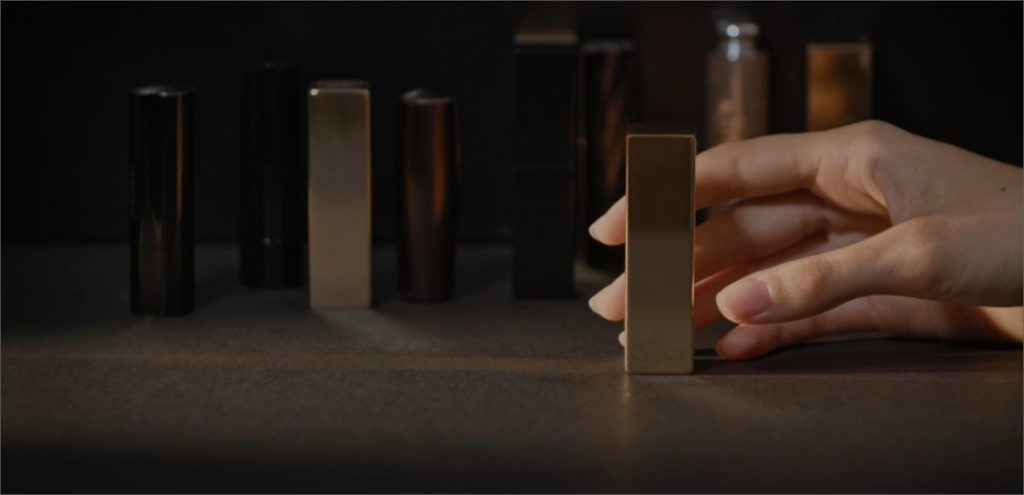With the growing ecological concerns facing the planet, finding an alternative to the single-use pack is becoming essential for every brand, and cosmetics are no exception: an increasing number of brands are channeling their R&D efforts into exploring refillable and recyclable packaging. Be it a luxury brand or a digital native brand, each must find a way to respond to this new responsible-packaging challenge while maintaining their “brand identity.”
Strong consumer demand for responsible packaging
The demand for more responsible packaging is growing by leaps and bounds. Consumers are increasingly aware of environmental issues and therefore seeking transparency and consistency: An organic brand can no longer sell its product in all-plastic packaging and be taken seriously. Customers are now well-informed and know what they want! Armed with apps like Yuka or Clean Beauty, they scan products for suspicious ingredients and, if need be, change brands to embrace more virtuous competitors.
These practical and easy-to-use applications encourage brands to modify the composition of their products so as to make them “Yuka compatible.” Transparency is actually becoming a marketing tool. Guerlain was the first brand to introduce a digital transparency platform, Bee Respect, which lets customers verify traceability throughout the lifecycle of their products.
Other groups, like L’Oréal, have also unveiled platforms to explain why they choose to continue using certain ingredients. Obtaining a perfectly clean formula and the virtuous packaging to go with it is far from easy.
“Clean” packaging and formulas: an industrial dilemma
Designing recyclable, biodegradable packaging and concocting formulas containing no controversial substances is no easy task. But many are ready to take on this challenge: For example, in collaboration with REN Clean Skincare, Aptar Beauty + Home is introducing the cosmetics industry’s first bottle made from recycled plastic that has properties identical to conventional plastic (i.e. the first use in cosmetology of chemically recycled polypropylene of food-grade quality, in pure, bright colors). It is important to remember that, behind these innovations, brands want very much to maintain their “brand image,” which complicates their ecological transition: It is hard to imagine luxury brands switching to all-cardboard packaging.
For lipsticks, it takes at least two years of research and development to come up with a certified organic and vegan formula. The Pomponne-makeup brand had to go back and forth with its formulators more than 65 times to at last end up with a beeswax-free and silicone-free formula. There is a more limited selection of high-performance raw materials in natural cosmetics, which influences the shades that can actually be achieved. Some, like poppy red, involve very complex formulations. In this long and costly process, newer brands have an advantage, since they started out building a sustainable product offer, saving them the transition costs.
Brands take an environmentally responsible approach
Many brands are now more committed to satisfying consumers by offering more environmentally responsible products. Cozie, for example, specializes in refillable cosmetics: It sells bulk products and zero-waste cosmetics, with glass packaging that is forever reusable, much like the Amalthea brand does. On the lipstick market, luxury brands like Guerlain are also moving towards refillable models. Lipstick cases are being repositioned as pieces of jewelry, like the leather (or vegan) case from La Bouche Rouge, one from Le Rouge Français (a case sheathed in apple skin), and the lacquered-metal case designed by Pierre Hardy for Hermès – all lovely objects to keep and refill. Even responsible packaging needs to look good! Visionary brand Kjaer Weis understood this trend a long time ago.
Consuming responsibly is now feasible for everyone with the development of consumer brands like Avril and Zao that make organic, vegan, refillable products. When it comes to packaging design and formulas, one of the most successful brands is undoubtedly the company Le Rouge Français, selling certified-organic lipsticks with a patented, plant-pigment innovation and unique transparent packaging that is not only recyclable, but made with biosourced, plant-based materials. Many up-and-coming brands are entering this market, each with its own special approach: Narcisséa focuses on locally sourced French ingredients for a 100% natural and holistic lipstick, ALL TIGERS manufactures clean and trendy liquid lipsticks, while Pomponne-makeup uses packaging made with 100% recyclable polypropylene and formulas containing 95% to 100% ingredients with natural, animal-free origins.
What is currently a movement will become widespread practice in the future. In early 2021, the Yuka application started analyzing not only a product’s formula, but its packaging. A few years from now, such applications will also assess the eco-responsibility of the entire manufacturing chain: Who do they work with? How are employees paid? Global organizations like the World Business Council for Sustainable Development have organized shared projects with several contributing companies, including Aptar, working to measure and improve the circularity of the manufacturing chain, of the plastics industry in general, and to better understand the social impacts along the way. For consumers to be convinced enough to buy, the products must be irreproachable from every angle.

